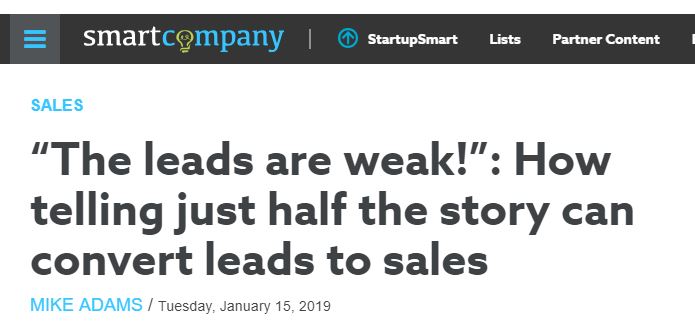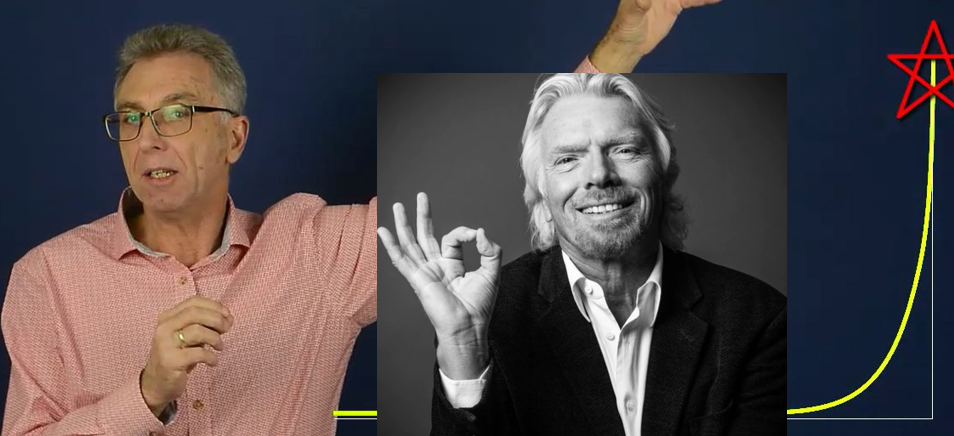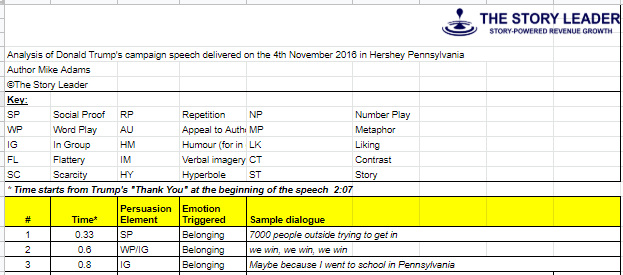Imagine how easy selling would be if you knew exactly what was happening with your future customer, if you could read your customer's mind?
A long time ago I was a new account executive for a large international conglomerate and responsible for selling mobile network equipment to an Australian telecommunications company. Our product range was vast but our insight into the customer's situation was limited as we were not incumbent in their network.
We were invited to tender for a mobile network sub-system.
I didn't know much about that technology, so downloaded the 150 slide PowerPoint pack. Behold! It appeared that we were quite credible and had significant success delivering this technology to other companies around the world.
Our senior management was keen to bid even though we had little idea about our customer's specific situation, how they perceived our technology or how they viewed the market.
It was an expensive tender response requiring several man-months of effort by technical experts in Europe, Asia and Australia. Post submission, international experts were flown in for presentations and everyone was hopeful for success in what would be a several tens of million dollar deal.
After a couple of weeks we were told that we made the short list and there followed a barrage of clarification requests. Good news!
And then nothing ....
Then, more nothing ...
Calls to the procurement were met with a polite
"We are still in the evaluation phase"
Our management was getting nervous.
"Maybe we should drop the price?"
my boss suggested.
"But, we have no way of knowing whether price is an issue, we're prevented from talking with the customer"
I said
"Well it can't hurt ..."
was the reply.
We dropped our price twice by more than a million dollars.
No response.
Four months later, we received a one paragraph message informing us that our bid was unsuccessful.
After the tender communication blackout period, I met with the customer's lead technical representative to find out what had happened.
I learnt that our two competitors were the customer's main equipment supplier of other sub-systems (Let's call them A) and a niche company (B) that was the incumbent supplier of the sub-system being tendered.
Incumbent, B, was not well regarded and there was a clear intent to replace them. Our solution was considered the best overall fit by the customer's scoring system taking all factors into consideration and systems integration rather than price was the key scoring factor.
So why didn't we win?
Well, after the tender submission, Competitor A engaged in a negotiation far wider than the tender scope and the customer saw an opportunity for significant savings in other parts of their network. Eventually those negotiations broke down.
By that time, however, Incumbent B's contract was expiring and there was insufficient time to proceed with any supplier other than B. So the least preferred supplier won the deal.
This a sales failure story. It was my responsibility to know what was going on and in this deal I was mostly clueless. I didn't even know that the customer had a high opinion of our technology.
Like a General in war you normally don't have the full picture in a sales engagement, if you could, the job would be easy, none-the-less ...
It's the sales person's responsibility to know what is going on!
How to see through the fog and plot your way to victory with better visibility?
Let's think like a General.
1. Reconnaissance
Only foolhardy commanders charge into battle without knowing the lay of the land and the distribution of the enemy's troops. Reconnaissance means carefully mapping the customer's organisation and the personal and business goals of the buying committee, well before the tender. You can do this with networking events, demonstration events, teaching opportunities, technology trials even charitable events.
Even more effective is a pre-battle skirmish
2. Skirmish
A skirmish is a minor engagement before the main battle that allows a commander to gauge the quality of the enemy troops and their fighting style. In sales, a skirmish is selling a small thing before you sell the big thing.
If we had sold a one million dollar item twelve months before the tens of million dollar tender, we would have learnt who the main players were, the customer's decision making style, their politics and their procurement and contracting process. This technique is so effective that it is worth building into your sales process.
3. Propaganda
Otherwise known as marketing, propaganda is an attempt position your solution via advertising and other means, well ahead if the battle. A powerful form of propaganda is a well-crafted oral story that self-propagates through the customer organisation. These stories often go under the acronym of FUD - fear, uncertainty and doubt but hope, vision and success stories are more powerful. You can read one of one of my favourite propaganda stories here
4. Espionage
Alright, I'm on shaky moral ground but this has to be mentioned. When you are selling to large organisations there is always someone that will say more than they should. I've noticed, for example, that smoker's seem to know more about a customer organisation than non-smokers. Why? Because they stand outside the customer's office and chat with the customer's smokers, there is a secret brotherhood there.
The customer 'coach' that you read about in sales text books is really a double agent and other vendors in adjacent technologies have sister spy networks. I won't say more.
5. Night vision scopes and drones
These are the questioning, listening and observation skills that help you to figure out what is really going on in each customer engagement.
Think of your questions like rifle shots
"Are you the decision maker?"
- answer, yes (This is wild shot in the dark and a MISS - you probably learnt nothing and wasted ammunition)
"Could you explain how this sort of decision is normally made in your company?" -
Detailed customer response (HIT, we scored reliable information)
There is an entire library of these information seeking questions that every sales person needs to master. Our Story Meeting online training course is great place to start learning these questions.
6. Surveillance
Social media platforms like Twitter, LinkedIn and Facebook provide us with far more information about our customer organisations that I could have dreamed of at the time of my tender story. These networks are like listening devices planted throughout customer's offices, all you need to do is tune in!
7. Interrogate Captured Customers
I'm not suggesting that you sneak out and kidnap key customer representatives (that's illegal, by the way), however if you know how to pull it off, your customer will willingly volunteer all the information you need about their critical needs, preferred buying patterns, how they view your competitors and what they really think of your company.
It's performed, usually as a consulting service, in the form of a face-to-face survey called an
Industry Perspective Audit
, or similar. These surveys can be extremely informative but they must be carried out by a skilled practitioner well before a tender so you can act on the results.
Sales people, to win competitive tenders,you need to think like a military commander and figure out what is really going on in your future customer's organisation. That is your job!








































